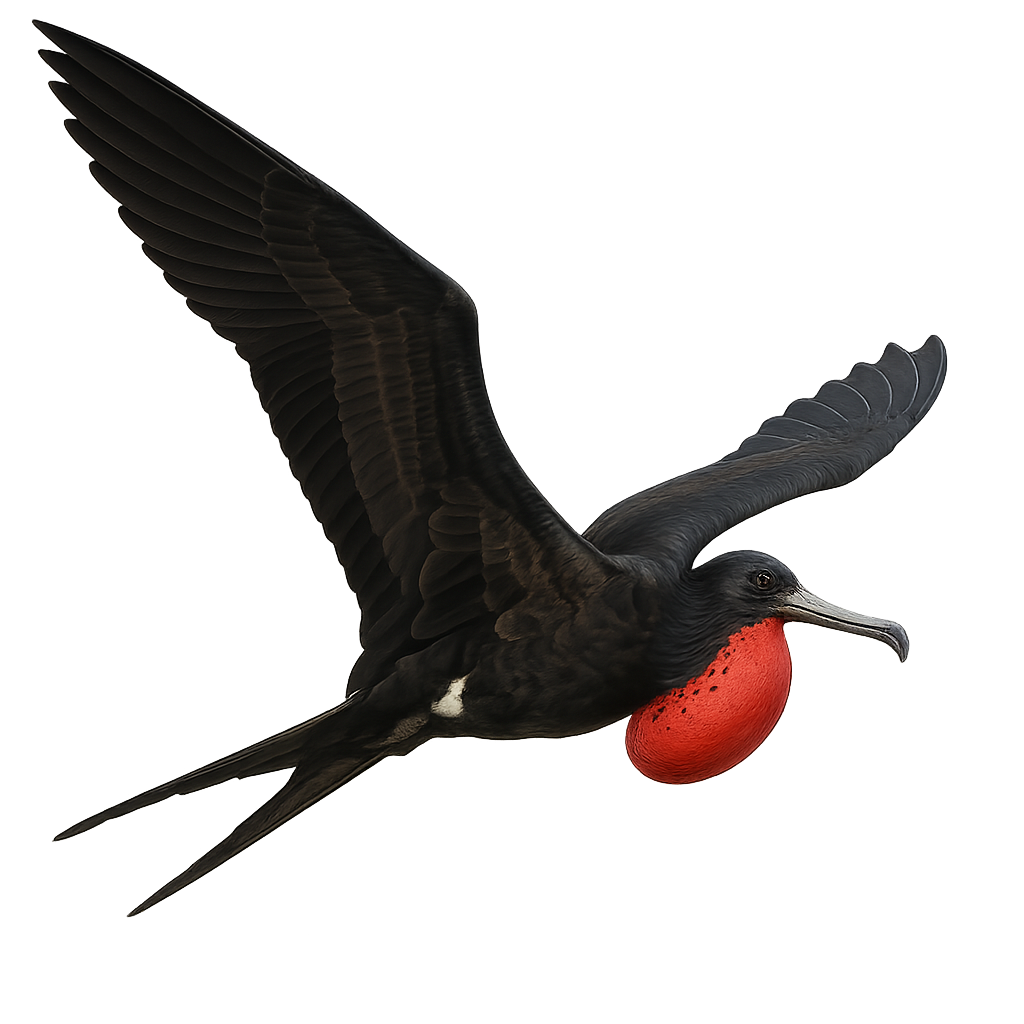Your wildlife photography guide.
Explore the lesser frigatebird in detail, study its behavior, prepare your shots.
Where to observe and photograph the lesser frigatebird in the wild
Learn where and when to spot the lesser frigatebird in the wild, how to identify the species based on distinctive features, and what natural environments it inhabits. The WildlifePhotographer app offers tailored photography tips that reflect the lesser frigatebird’s behavior, helping you capture better wildlife images. Explore the full species profile for key information including description, habitat, active periods, and approach techniques.
Lesser Frigatebird
Scientific name: Fregata ariel

IUCN Status: Least Concern
Family: FREGATIDAE
Group: Birds
Sensitivity to human approach: Suspicious
Minimum approach distance: 10 m
Courtship display: March to May
Incubation: 50-55 jours
Hatchings: April to June
Habitat:
Tropical islands, mangroves, coastlines
Activity period :
Primarily active during the day, with peak activity in the morning and late afternoon.
Identification and description:
The Lesser Frigatebird is a striking seabird known for its sleek silhouette and long, scythe-shaped wings. It is primarily black with a white belly in males, while females have a white breast band. This bird is renowned for its graceful flight and ability to soar long distances effortlessly. Lesser Frigatebirds feed mainly on fish and squid, which they catch at the water's surface. They are also known for their kleptoparasitic behavior, stealing food from other seabirds. They nest in colonies on tropical islands, building rudimentary nests in trees or shrubs.
Recommended lens:
400mm – adjust based on distance, desired framing (portrait or habitat), and approach conditions.
Photography tips:
To photograph the Lesser Frigatebird, it is advisable to use a telephoto lens of at least 400mm to capture detailed images of this bird in flight. The best opportunities often arise on sunny days when natural light highlights the details of their plumage. Look for colonies on tropical islands where these birds gather to nest. Be patient and wait for them to soar nearby. Avoid sudden movements to prevent scaring them and maintain a safe distance of at least 10 m.
The WildlifePhotographer App is coming soon!
Be the first to explore the best nature spots, track rutting seasons, log your observations, and observe more wildlife.
Already 1 439 wildlife lovers subscribed worldwide

